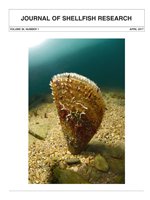Mussels play an important supplementary role in the diet of coastal communities in many parts of the world. Over the last three decades, exploitation pressure on the intertidal brown mussel Perna perna on the southeast coast of South Africa has become unsustainable, eliminating mussels from substantial areas of suitable habitat and creating the need to rehabilitate denuded shores. The effect of mussel size on the effectiveness of the rehabilitation technique was tested, hypothesizing that mussel size may influence the effectiveness of rehabilitation due to size-dependent energy allocation (e.g., growth versus reproduction). Immature, small (1–2 cm), and sexually mature larger mussels (3–4 cm) were deployed at four sites, separated by distances of about 100 m, and sampled after 2, 4, and 6 mo. It was found that there were no significant differences between the two size classes in survival rates, which were always high (∽60–80%). There were frequent size effects on the other variables measured, but these tended to depend on the criteria used. Small mussels showed significantly greater growth in terms of shell length, increase in weight, and percentage increase in dry weight. Similarly, small mussels had weaker byssal attachment strength than large mussels, but higher tenacity when attachment strength was normalized to shell area. Small mussels also generally had higher condition indices than large mussels. This was probably related to spawning by adults and the difference was not always significant. For large mussels, maintenance, including byssal thread production to resist dislodgement, seemed to have higher priority than shell growth and condition. The absence of significant differences in tenacity between size classes would explain their similar survival rates. No difference was found between size classes in the numbers of new recruits appearing in experimental patches. Deciding which size class is better for rehabilitation depends on the criterion used. Overall, it was found that ontogenetic reallocation of energy reserves affected neither biomass increase nor survival, probably the most meaningful definitions of success. Given their greater availability and efficiency at increasing biomass, it is suggested that on balance small mussels are likely to be more effective in restoring mussel populations.
How to translate text using browser tools
1 April 2017
Effects of Size-Dependent Allocation of Energy to Maintenance, Growth, and Reproduction on Rehabilitation Success in Overexploited Intertidal Mussels Perna perna (L.)
L. Macala,
C. D. Mcquaid
ACCESS THE FULL ARTICLE

Journal of Shellfish Research
Vol. 36 • No. 1
April 2017
Vol. 36 • No. 1
April 2017
ecological rehabilitation
mussels
natural resources
overexploitation
Perna perna




